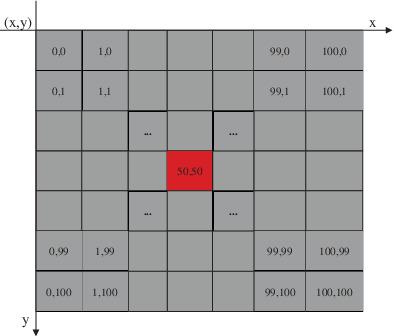当前位置:
X-MOL 学术
›
Meteorol. Appl.
›
论文详情
Our official English website, www.x-mol.net, welcomes your
feedback! (Note: you will need to create a separate account there.)
Tiny‐RainNet: a deep convolutional neural network with bi‐directional long short‐term memory model for short‐term rainfall prediction
Meteorological Applications ( IF 2.3 ) Pub Date : 2020-10-08 , DOI: 10.1002/met.1956 Chang‐Jiang Zhang 1 , Hui‐Yuan Wang 1 , Jing Zeng 1 , Lei‐Ming Ma 2 , Li Guan 2
Meteorological Applications ( IF 2.3 ) Pub Date : 2020-10-08 , DOI: 10.1002/met.1956 Chang‐Jiang Zhang 1 , Hui‐Yuan Wang 1 , Jing Zeng 1 , Lei‐Ming Ma 2 , Li Guan 2
Affiliation

|
Rainfall is not only related to current and previous meteorological conditions but also to meteorological conditions of the current location and surrounding regions. Existing short‐term rainfall prediction methods mainly focus on radar echo extrapolation to predict the future radar echo maps, and then retrieve rainfall based on the predicted radar echo maps. These methods obtain rainfall through two separate steps usually leading to large accumulated errors. However, Tiny‐RainNet is proposed by combining convolutional neural networks (CNNs) with bi‐directional long short‐term memory (BiLSTM) to directly predict future rainfall based on sequential radar echo maps. The structure of Tiny‐RainNet is simpler than existing rainfall prediction models combining CNNs with LSTM. In order to further reduce computational complexity of the Tiny‐RainNet and obtain good rainfall prediction results, 10 × 10, not the original 101 × 101, sequential radar maps are used as inputs of the Tiny‐RainNet after making many tests considering temporal–spatial meteorological conditions. The proposed model takes into account the influence of temporal–spatial meteorological conditions on rainfall prediction. This avoids the accumulated error caused by multi‐step prediction methods. The overall performance of the Tiny‐RainNet model performs better than fully connected LSTM, LSTM and convolutional LSTM.
中文翻译:

Tiny-RainNet:具有双向长短期记忆模型的深度卷积神经网络,用于短期降雨预测
降雨不仅与当前和以前的气象条件有关,而且还与当前位置和周围地区的气象条件有关。现有的短期降雨预测方法主要集中在雷达回波外推法上,以预测未来的雷达回波图,然后根据预测的雷达回波图检索降雨。这些方法通过两个单独的步骤获得降雨,通常会导致较大的累积误差。但是,Tiny-RainNet是通过将卷积神经网络(CNN)与双向长短期记忆(BiLSTM)相结合而提出的,可以基于顺序雷达回波图直接预测未来的降雨。Tiny-RainNet的结构比结合CNN和LSTM的现有降雨预测模型要简单。为了进一步降低Tiny-RainNet的计算复杂度并获得良好的降雨预测结果,将10×10而不是原始的101×101进行降雨,在考虑了时空因素后进行了多次测试后,顺序雷达图被用作Tiny-RainNet的输入。气象条件。所提出的模型考虑了时空气象条件对降雨预报的影响。这避免了由多步预测方法引起的累积误差。Tiny-RainNet模型的整体性能优于完全连接的LSTM,LSTM和卷积LSTM。所提出的模型考虑了时空气象条件对降雨预报的影响。这避免了由多步预测方法引起的累积误差。Tiny-RainNet模型的整体性能优于完全连接的LSTM,LSTM和卷积LSTM。所提出的模型考虑了时空气象条件对降雨预报的影响。这避免了由多步预测方法引起的累积误差。Tiny-RainNet模型的整体性能优于完全连接的LSTM,LSTM和卷积LSTM。
更新日期:2020-10-11
中文翻译:

Tiny-RainNet:具有双向长短期记忆模型的深度卷积神经网络,用于短期降雨预测
降雨不仅与当前和以前的气象条件有关,而且还与当前位置和周围地区的气象条件有关。现有的短期降雨预测方法主要集中在雷达回波外推法上,以预测未来的雷达回波图,然后根据预测的雷达回波图检索降雨。这些方法通过两个单独的步骤获得降雨,通常会导致较大的累积误差。但是,Tiny-RainNet是通过将卷积神经网络(CNN)与双向长短期记忆(BiLSTM)相结合而提出的,可以基于顺序雷达回波图直接预测未来的降雨。Tiny-RainNet的结构比结合CNN和LSTM的现有降雨预测模型要简单。为了进一步降低Tiny-RainNet的计算复杂度并获得良好的降雨预测结果,将10×10而不是原始的101×101进行降雨,在考虑了时空因素后进行了多次测试后,顺序雷达图被用作Tiny-RainNet的输入。气象条件。所提出的模型考虑了时空气象条件对降雨预报的影响。这避免了由多步预测方法引起的累积误差。Tiny-RainNet模型的整体性能优于完全连接的LSTM,LSTM和卷积LSTM。所提出的模型考虑了时空气象条件对降雨预报的影响。这避免了由多步预测方法引起的累积误差。Tiny-RainNet模型的整体性能优于完全连接的LSTM,LSTM和卷积LSTM。所提出的模型考虑了时空气象条件对降雨预报的影响。这避免了由多步预测方法引起的累积误差。Tiny-RainNet模型的整体性能优于完全连接的LSTM,LSTM和卷积LSTM。











































 京公网安备 11010802027423号
京公网安备 11010802027423号